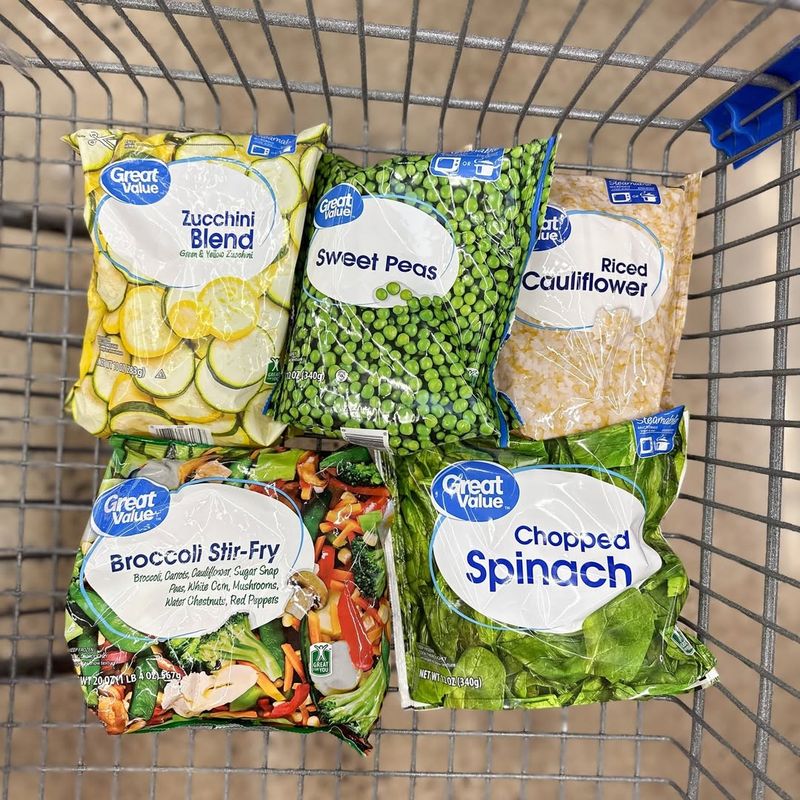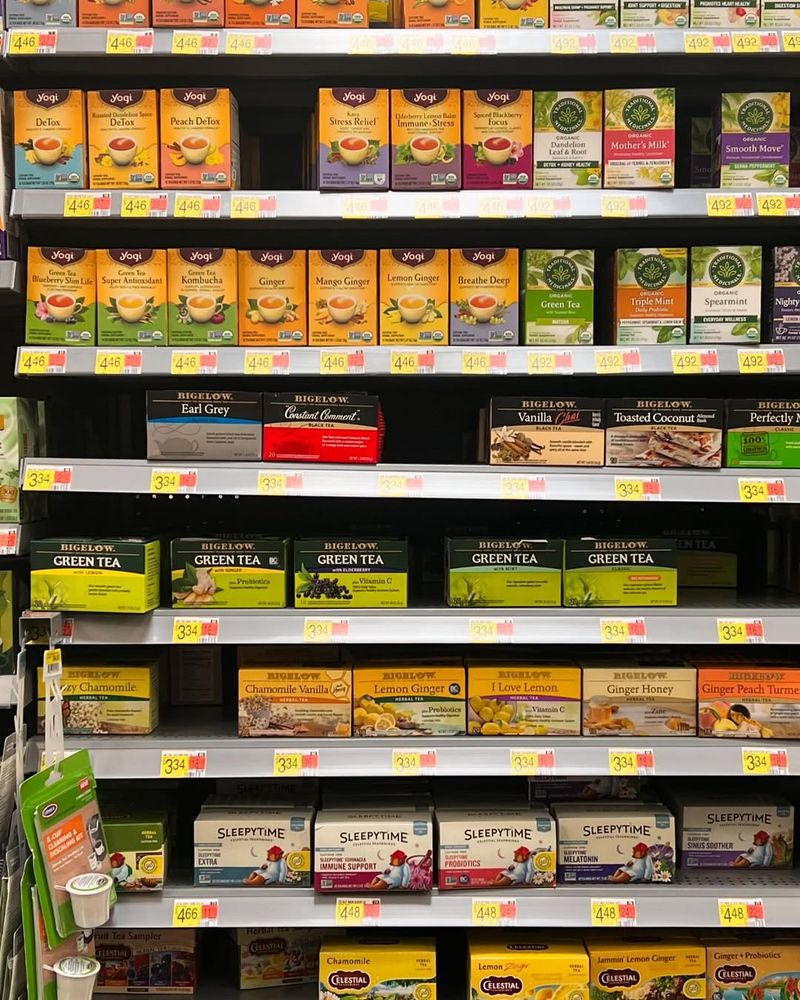Picture this: you’re strolling through the aisles of your local Walmart, confident that your go-to Great Value products will keep your wallet happy. But as 2025 unfolds, you might notice that some of these trusty staples are creeping up in price.
Recent reports indicate that a number of products are expected to see price increases in 2025 due to factors such as ongoing food inflation, supply chain disruptions, and new tariffs on imports.
What’s behind this unsettling trend, and which items should you keep an eye on? Let’s dive into the world of Walmart’s groceries and uncover the 17 products that are poised for a price hike this year.
1. Eggs

Eggs have always been a breakfast staple, but recent avian flu outbreaks are threatening to make them more of a luxury item. With the flu affecting poultry populations globally, the supply of eggs is becoming increasingly unstable. This means higher production costs, which could soon hit consumers’ pockets.
In addition to health crises, transportation issues and feed cost increases are making egg pricing volatile. As demand continues to rise, it’s likely that we’ll see a significant price increase in the near future.
If eggs are a key part of your diet, consider looking for local suppliers who might offer better deals or even raising your own chickens, if circumstances allow. Planning ahead and buying in bulk when prices dip could also be a wise strategy.
2. Milk

Milk is not just for cereal anymore; it’s a household necessity for families across the globe. However, the dairy sector is facing inflationary pressures from all sides, including feed costs, labor shortages, and transportation expenses. As these factors converge, milk prices are expected to climb.
Moreover, climate change is impacting dairy farms, resulting in lower production and higher operational costs. This combination of factors could mean that your morning latte might cost a bit more than you’d like.
To manage expenses, consider exploring plant-based milk alternatives, which are not only increasing in popularity but may also offer a more stable price point. Alternatively, keeping an eye on sales and stocking up when prices are low can help mitigate the potential financial impact.
3. Butter

With increased feed prices and labor shortages, the production of butter is becoming more expensive, leading to anticipated price hikes.
As costs soar, consumers may need to rethink their butter usage or seek out alternatives such as margarine or cooking oils. The ripple effect of dairy inflation is set to make those golden sticks more precious than ever.
For those who love to bake, buying butter in larger quantities during sales or exploring bulk buy options can be a smart move. Additionally, experimenting with recipes that use less butter or substitute ingredients might not only save money but also inspire culinary creativity.
4. Cheese

The dairy sector’s ongoing inflation is making cheese more expensive across the board. From cheddar to mozzarella, no variety is safe from the pressures of rising production and distribution costs.
These price increases are often passed down to consumers, making your favorite cheese-based dishes a bit pricier. Whether it’s for sandwiches, pizzas, or gourmet cheese boards, the impact is felt in the wallet.
Consider buying cheese in bulk or opting for store-brand versions which may offer some price relief. For the adventurous, exploring new or less popular cheese varieties can be both a cost-effective and exciting culinary adventure.
5. Bread

Bread, a universal staple, is facing potential price hikes due to increased wheat and production costs. As these factors put pressure on the supply chain, the cost of bread is anticipated to rise, affecting countless households.
Wheat price volatility, driven by climate change and geopolitical factors, is a primary concern for bakers, who may pass these increases onto consumers. Your daily toast or sandwich might soon require a bigger slice of your budget.
Planning meals that reduce bread dependency or exploring homemade options can help offset price increases. Investing in a bread maker or experimenting with alternative grains like rye or spelt can also add variety to your diet while potentially saving money.
6. Pasta

Global factors affecting wheat supply, such as climate changes and transportation hurdles, are causing a ripple effect in pasta pricing.
As these costs increase, so too does the price of your favorite pasta dishes, from spaghetti to penne. This could mean reevaluating how often pasta makes it to the dinner table.
Consider diversifying your meals by including other grains like quinoa or rice noodles, which might offer more stability in pricing. Buying pasta in bulk during sales and exploring store-brand options can also help manage grocery expenses effectively.
7. Canned Vegetables

Canned vegetables, a pantry staple for quick and easy meals, are facing price hikes due to ongoing supply chain issues. These disruptions affect everything from production to distribution, leading to increased costs for consumers.
As the supply chain struggles to keep up with demand, prices for canned goods are expected to rise. This could impact budget-conscious shoppers who rely on these items for their affordability and convenience.
To mitigate costs, consider purchasing store-brand canned goods, which often provide similar quality at a lower price.
Additionally, exploring fresh or frozen alternatives when on sale can add variety to your meals without breaking the bank. Keeping an eye on coupons and discounts can also be a strategic approach to managing your grocery bills.
8. Cereal

Cereal has long been a breakfast favorite, but grain price fluctuations are threatening to make it more costly. With grain prices influenced by global market changes, the impact on cereal production is becoming evident.
As these market dynamics play out, consumers might notice a gradual increase in cereal prices. Breakfast lovers may need to budget more for their morning meal or consider alternative options.
Shopping for cereals during sales or opting for store-brand varieties can help manage costs. Additionally, exploring other breakfast choices like oats or homemade granola can provide nutritious and cost-effective alternatives to traditional cereals.
9. Cooking Oil

Cooking oil, a kitchen essential, is experiencing price pressures due to increasing global demand and supply constraints. These factors are making this staple more expensive, affecting both home cooks and professional chefs.
The impact of rising oil prices is felt in various culinary applications, from frying to baking. As costs climb, consumers might need to explore alternative oils or cooking methods to keep meal preparations within budget.
Buying in bulk during promotions or switching to oils with a more stable price, such as canola or vegetable oil, can be a cost-effective strategy. Additionally, considering spray oils or reusable oil misters may help reduce overall consumption, offering more control over expenses.
10. Frozen Vegetables

Frozen vegetables, known for their convenience and long shelf life, are seeing price increases driven by rising energy and transportation costs. These factors contribute to the expenses of freezing, storing, and distributing frozen goods.
As energy prices climb, the cost of keeping these veggies frozen until they reach your table also rises. This could mean a higher grocery bill for those who rely on frozen vegetables as a healthy and convenient option.
To manage costs, keep an eye out for sales and buy in bulk when possible. Alternatively, mixing in fresh vegetables when they’re in season or on sale can offer a tasty and budget-friendly compromise.
11. Rice

Factors such as climate change, international trade policies, and crop yield fluctuations are impacting rice availability and cost.
These changes could result in higher prices on store shelves, affecting families and individuals who rely on rice as a dietary staple. Adapting to these potential increases might require changes in purchasing habits or dietary adjustments.
Consider buying rice in larger quantities during sales or exploring different grain varieties, which can offer nutritional benefits and may have more stable pricing. Utilizing rice alternatives like quinoa or barley can also diversify your diet while potentially saving money.
12. Flour

As wheat costs rise, the impact is directly felt in the price of flour, affecting bakers and home cooks alike.
For those who bake frequently, these price increases can add up, potentially necessitating a review of baking habits or the exploration of alternative ingredients. The ripple effect of these changes could extend to a variety of baked goods, from bread to cakes.
To counteract rising costs, consider buying flour in bulk during promotions or experimenting with alternative flours such as almond or coconut, which can add unique flavors and textures. Planning recipes around sales can also help maintain a balanced grocery budget.
13. Sugar

Weather disruptions, production challenges, and international trade policies are contributing to this trend, impacting sugar availability and cost.
These factors are causing a ripple effect across the food industry, influencing the prices of sweetened products and recipes. Consumers might find themselves budgeting more for baking supplies and sweet treats.
Keeping an eye on sugar sales and buying in bulk can be a proactive way to manage costs. Experimenting with sugar substitutes like honey or agave syrup may offer both health benefits and potential savings. Adjusting sweet recipes to use less sugar can also help stretch your supply further.
14. Coffee

Coffee lovers, brace yourselves. Import tariffs and global demand are driving up the cost of that cherished morning brew. As coffee-producing regions face economic and environmental challenges, these factors are trickling down to consumers.
This could mean higher prices for your daily caffeine fix, whether you brew at home or grab a cup on the go. The impact of these price increases is felt keenly by coffee aficionados who consider it an essential part of their routine.
To navigate rising costs, consider purchasing coffee in bulk during promotions or exploring different brands and blends that offer better value. Investing in a quality coffee maker can also provide long-term savings, as homemade brews tend to be more economical than café purchases.
15. Tea

Tea drinkers may soon find themselves paying more for their soothing cup. Just like coffee, tea prices are being influenced by import costs and global market dynamics, affecting availability and pricing.
As these challenges persist, the cost of your favorite tea blends might increase, prompting a reevaluation of how often you indulge in this calming ritual. For avid tea drinkers, this could mean budgeting more for their leafy brews.
Exploring bulk buying options or less expensive tea varieties can help manage expenses. Additionally, growing your own herbal blends, like mint or chamomile, can offer a delightful and cost-effective alternative. Watching for sales and trying store-brand options may also keep costs in check.
16. Peanut Butter

Peanut butter, a versatile favorite for sandwiches and snacks, is facing potential price increases due to rising ingredient costs. Factors such as crop yield variations and production expenses are contributing to this trend.
As peanut butter prices climb, families might find it necessary to adjust their shopping habits or explore alternative spreads. This could impact school lunches, snacks, and baking projects.
To save money, look for store-brand options or buy in bulk when available. Experimenting with homemade nut butters using different nuts can also be a rewarding and cost-effective alternative. Keeping an eye on sales and trying new brands can help stretch your grocery budget further.
17. Canned Tuna

Canned tuna, a go-to protein source for many, is facing price increases due to challenges in the seafood supply chain. Overfishing, environmental regulations, and transportation issues are all contributing factors.
As the cost of sourcing and processing tuna goes up, so does the price on store shelves. This may affect those who rely on canned tuna for its convenience and affordability as a protein source.
Consider exploring alternative protein sources, such as legumes or eggs, which might offer more stable pricing. Watching for canned tuna sales and buying in bulk can also help manage costs. Additionally, trying different brands or flavors might provide both savings and variety.
Leave a comment